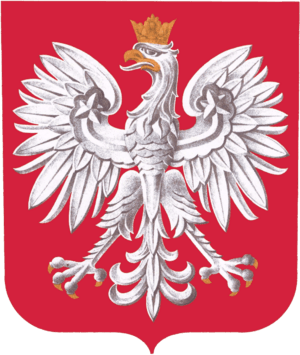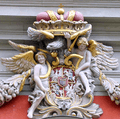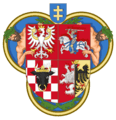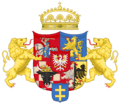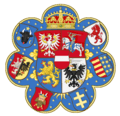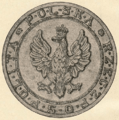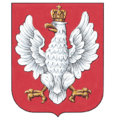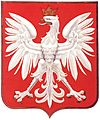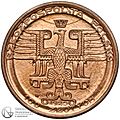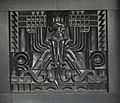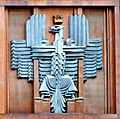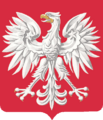Coat of Arms of Poland facts for kids
The official Coat of Arms of Poland is a special symbol for the country. It shows a white eagle with a golden crown on its head, all placed on a red shield. This powerful image is one of Poland's most important national symbols, representing its long history and strong spirit.
According to an old legend, the idea for the White Eagle came from Poland's legendary founder, Lech. He was exploring new lands when he saw a large white eagle's nest. As he watched the bird, the setting sun, which was red, shone on its wings. This made the tips of the eagle's wings look golden, while the rest of the eagle stayed pure white. Lech was so amazed by this beautiful sight that he decided to build his settlement right there. He chose the white eagle as the symbol for his new home, which eventually became Poland.
Contents
What is a Coat of Arms?
A coat of arms is like a special badge or emblem that represents a country, a family, or an organization. It's often shown on a shield and uses specific colors and symbols. These symbols tell a story about who or what they represent. For countries, a coat of arms is a very important national symbol, just like a flag or a national anthem. It helps people recognize and feel proud of their country.
The White Eagle Through History
The White Eagle has been a symbol of Poland for many centuries. Its design has changed a bit over time, but the main idea of a white eagle on a red background has stayed the same.
Early Symbols
- The first known use of an eagle as a symbol in Poland dates back to the 10th century.
- Coins from the time of Bolesław I the Brave, around 1000 AD, show a bird that looks like an eagle.
- Over the years, different Polish rulers used the eagle in their own ways.
- Sometimes, the eagle was shown without a crown, especially during times when Poland was not fully independent.
Changes Over Time
- During the Polish–Lithuanian Commonwealth, the Polish White Eagle was often shown alongside the Vytis, the coat of arms of Lithuania. This showed the strong connection between the two nations.
- After Poland lost its independence for a long time, the eagle symbol was still used by Poles who hoped for their country's return.
- When Poland became independent again in 1918, the White Eagle was officially restored as the national symbol.
Modern Design
- The current design of the Polish Coat of Arms was officially adopted in 1927.
- It shows a white eagle with a golden crown, a golden beak, and golden talons.
- The eagle is placed on a red shield.
- During the time of the Polish People's Republic (1944-1989), the eagle's crown was removed. This was because the government at the time was communist and did not want symbols of monarchy.
- After the fall of communism in 1989, the golden crown was proudly returned to the eagle, bringing back the traditional symbol of Poland.
- Today, you can see the White Eagle on Polish passports, government buildings, and official documents. It is a powerful reminder of Poland's history, strength, and freedom.
Images for kids
-
John III Sobieski's coat of arms crowning the Royal Chapel in Gdańsk
-
Tapestry with the coats of arms of the Crown of the Kingdom of Poland and Lithuania, ca. 1555
-
King of Poland in tournamental attire
-
Coat of arms of Poland (official since 1927) in Paris during the World Expo in 1937
-
Władysław II Jagiełło (Jogaila)
-
Template of the white eagle in the coat of arms of Poland (1919-1927)
-
Polish coat of arms (unofficial) in Art Deco style, on the facade of the Ministry of Transport in Warsaw (architect Rudolf Świerczyński 1931).
-
Coat of arms of Poland during the Warsaw Uprising, 1944.
-
The Coat of arms of Poland in the Supreme Court of Poland in Warsaw (by architect Marek Budzyński 1992). It's a knight's shield, Modern French type in heraldry. The knight's shields without ordinary grey oval plates are rare on facades. This type of shield, without grey oval plate resembling the coat of arms in the Polish parliament in Warsaw.
See also
 In Spanish: Escudo de Polonia para niños
In Spanish: Escudo de Polonia para niños


